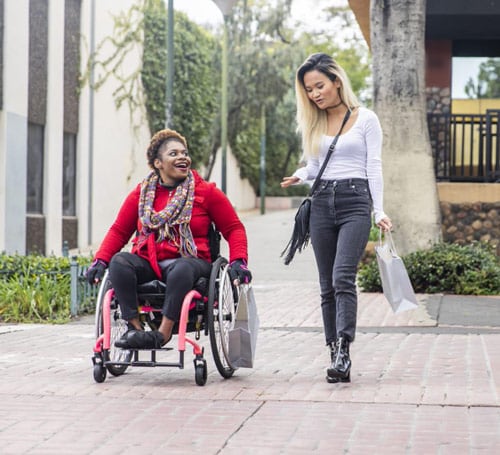Improving Health Through Transportation Policy
The US transportation system has been shaped by multiple policies and actions stemming from transportation and community planners, funding agencies and others at federal, state, local, and tribal levels. Today, the system is designed to move people and goods efficiently; however, transportation systems also impact quality of life and health. Government and non-government agencies are seeking innovative policies and programs that protect and promote health while accomplishing the primary transportation objectives.
The Opportunity

Transportation improvements can save lives by preventing chronic diseases, reducing and preventing motor-vehicle-related injury and deaths, and improving environmental health. Expanding the availability of everyone to access safe transportation options can also stimulate economic development and address health disparities.
CDC supports strategies with a balanced portfolio of transportation choices to support health and reduce health care costs. Transportation policy can:
- Promote safe and convenient opportunities for physical activity by supporting active transportation infrastructure.
- Reduce injuries associated with motor vehicle crashes.
- Provide access to jobs, health care, social interaction, and healthy foods.
- Encourage healthy community design.
- Reduce human exposure to air pollution and adverse health impacts associated with these pollutants.
- Ensure that all people have access to safe, healthy, convenient, and affordable transportation.
The CDC Recommendations for Improving Health through Transportation Policy gives specific guidelines for considering inclusion of public health within transportation issues.
Rationale
Improved transportation policies and actions could address several public health concerns, including:
- Physical inactivity is a major contributor to the steady rise in rates of obesity, diabetes, heart disease, stroke, and other chronic health conditions in the United States.
- Many Americans view walking and bicycling within their communities as unsafe because of the speed and volume of traffic as well as the lack of sidewalks, crosswalks, and bicycle facilities.
- Motor vehicle crashes are the leading cause of injury-related death for many age groups. Pedestrians and bicyclists are at an even greater risk of death from crashes than those who travel by cars and other motor vehicles. Older adults, people of color, and people walking in low-income communities are disproportionately represented in fatal crashes involving people walking.
- A lack of efficient alternatives to automobile travel disproportionately affects vulnerable populations such as the poor, the elderly, people who have disabilities and children by limiting access to jobs, health care, social interaction, and healthy foods.
- Air pollution from motor vehicles continues to contribute to adverse respiratory and cardiovascular health effects.
- Transportation accounts for approximately one-third of all US greenhouse gas emissions contributing to climate change.
- Public Health Action Guide – Public Transportation [PDF-1.30MB]
Actions for public health practitioners to increase to increase access to public transportation in their communities. - Transportation Sector: What’s Your Role?
Learn what transportation professionals can as part of the Active People, Healthy Nation℠ Initiative do to promote active living by helping to improve pedestrian, cycling, and transit spaces in their communities. - Transportation Health Impact Assessment (HIA) Toolkit
A framework for public health departments, city planners, project managers, and others to conduct HIAs on proposed transportation projects, plans, and policies. - Transportation and Health Tool
Provides easy access to data that practitioners can use to examine the health impacts of transportation systems - Transportation and Health: Policy Interventions for Safer, Healthier People and Communities [PDF-1.39MB]
Effects of transportation policies on public health in three key areas: environment and environmental public health, community design and active transportation, and motor vehicle-related injuries and fatalities.
